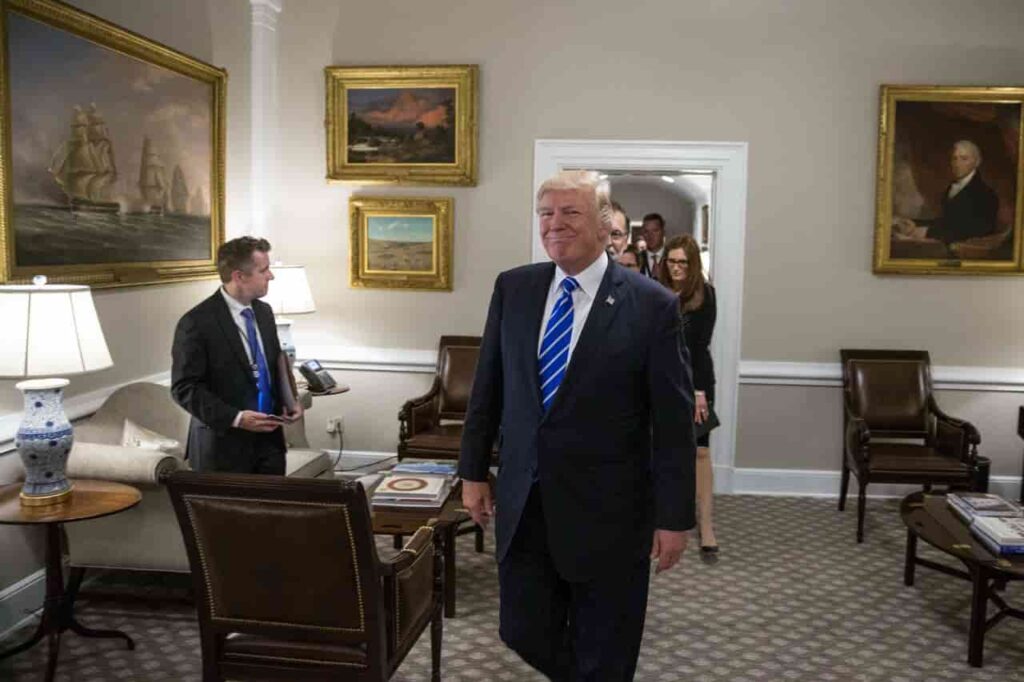The fluctuating landscape of cryptocurrency continues to capture the global imagination, with recent developments under President Donald Trump’s administration drawing significant attention. As we explore the first 100 days of his presidency, it’s evident that his initial policies have had unexpected impacts on Bitcoin (BTC) and its investors. This period, filled with optimism for crypto-enthusiasts due to Trump’s pro-crypto rhetoric, brought unexpected challenges that demand a closer look to understand their implications on Bitcoin market trends.
Analyzing the Impact of President Trump’s First 100 Days on Bitcoin
Under President Trump’s administration, Bitcoin saw a surprising downturn, despite the initial optimism post his re-election in November 2024. Initial expectations saw Bitcoin soaring to all-new highs, reaching over $109,000 as markets anticipated his favorable stance on cryptocurrency. However, the reality of his presidency has contrasted starkly with these hopeful beginnings, as revealed by new Finbold research.
The Decline in Bitcoin Millionaire Addresses
Finbold’s insights indicate that during the early months of Trump’s administration, there has been a notable decline in Bitcoin millionaire addresses. From January 21 to April 30, the number of Bitcoin addresses holding between $1 million and $9.99 million dropped by 12.61%, totalling a reduction of 19,869 addresses. This decrease is a clear indicator of the nervous sentiment that took hold among significant Bitcoin holders.
Plummeting Numbers of Larger Bitcoin Holdings
Addresses holding $10 million or more in Bitcoin experienced an even steeper decline. Their numbers fell by 18.30%, equating to a loss of 3,441 such addresses. This translates to an average of 233 BTC millionaire addresses being lost daily during Trump’s initial months, revealing the apprehensions among high-value cryptocurrency investors.
Broader Implications on Bitcoin Holders
The ramifications of this trend weren’t confined solely to the wealthiest investors. The entire range of Bitcoin addresses holding more than $1 witnessed a decline during this period. Between January 1 and April 30, the total number of such addresses fell from 91 million to 88 million, marking a 3.28% decrease.
Impact on Bitcoin Market Valuations
Despite these declines, Bitcoin experienced an unexpected rally in April, helping alleviate the dip. This surge saw prices jump from lows near $75,000 to stabilize just under $95,000, showcasing Bitcoin’s volatility and resilience. However, relative to its price of $102,204 on January 21, Bitcoin’s market position remains challenging.
FAQs
Why did Bitcoin decline during Trump’s administration?
Bitcoin’s decline can be attributed to multiple factors, including investor uncertainty and market volatility. Despite Trump’s pro-crypto rhetoric, actual policy implementations may not align with market expectations, leading to a decrease in investment confidence.
Is Bitcoin expected to recover from this downturn?
While Bitcoin is known for its volatility, historical data shows its tendency to rebound. Ongoing developments in blockchain technology and its increasing adoption could potentially lead to market recovery, although investors should remain cautious and informed about market dynamics.
How can investors stay informed about Bitcoin trends?
Utilizing financial insights platforms like Finances Zippy can help investors stay updated with real-time price predictions and market analysis from experts. Such platforms offer strategic insights that are crucial for making informed investment decisions.
What does this decline mean for future cryptocurrency policies?
The recent market trends might influence future regulatory approaches towards cryptocurrencies. As governments aim to stabilize and legitimize the market, policy shifts could emerge, potentially altering the landscape of cryptocurrency investment and adoption.
This comprehensive guide delves into the intricate dynamics surrounding Bitcoin’s performance during President Trump’s early days in office. By exploring the technological and economic factors at play, this analysis aims to equip readers with the knowledge necessary to navigate the ever-evolving world of cryptocurrencies.

